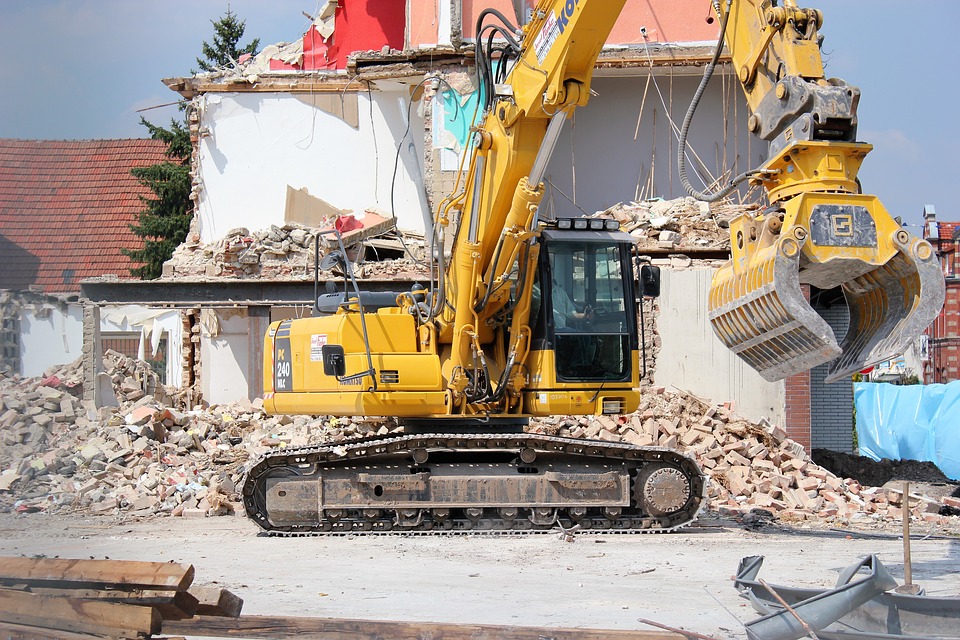The most efficient strategy will depend on your goals on the market. Discover some of the most widely used approaches in property development.
There are many ways to succeed in property development, with different strategies working to fulfil different goals. But if you want to start turning considerable profits, you’ll need to precisely define your business goals and understand what strategy is best suited for pursuing them.
The marketplace is quite complex, but it provides ample opportunity for well-informed investment decisions.
Not every strategy will be as effective as another. It may also depend on specific circumstances. That’s why an in-depth knowledge of the marketplace is crucial when choosing the right approach.
To decide on a strategy, you’ll need to consider your risk tolerance, business goals, and future income projections. Not clearly defining these factors can cause you to struggle with articulating a strategy and face numerous challenges.
In this article, you’ll learn about the most effective property development strategies. And ultimately, it will help you decide on the one that fits your needs the most.

Raw Land Development
Commonly viewed as an option reserved for experts, raw land development could, in fact, benefit every developer, including beginners.
The strategy entails purchasing land and holding it for development, renting, or long-term capital appreciation. The process of developing the land is somewhat complex, but it can yield consistent profit and provide a reliable cash flow.
While this strategy involves more work than others and requires a developer’s full attention, it can prove quite lucrative if done right because it deals with a limited, very valuable resource. This is especially true if the land you’ve purchased is in a growing area since it’s likely that properties on such locations will become more valuable.
When you invest in raw land, it’s crucial to determine the expected return on investment, which includes the expenses and estimated revenue. It would help if you got a clear picture of the costs involved in purchasing and developing the land, which will help you determine your maximum offer price.
Another factor to consider is zoning, as it will influence what you should build on the land. It would be best to understand the zoning rules as they apply to the state or territory where the land’s located before deciding on a purchase.
Determining whether you can build a residential or commercial property will inform your decision and largely influence the investment’s feasibility.
Construction can begin once you acquire the land and secure the financing. On raw land, horizontal development will come first and building the actual property will start only when the utilities are in place. In this phase, you’ll have to devote all your attention to the construction work. Finding reliable construction professionals and being on location is necessary to ensure the job’s quality and avoid future complications.
Finally, when you get to the marketing phase, your efforts will rely on market prices and demand. And this will depend on the area you’ve chosen. This is when the research you did beforehand will combine with your marketing strategy. If you do both right, the investment could turn a considerable profit.
The BRRRR Strategy
BRRRR is a popular, scalable, and often very successful strategy that relies heavily on adding value. As an acronym, BRRRR stands for:
- Buying
- Renovation or Rehabilitation
- Renting
- Refinancing
- Repeating
When it comes to buying, it’s a straightforward matter of finding an undervalued property. And you can come across a great deal in many ways – through auctions, buying from a seller in distress, or purchasing a property in an undeveloped area with good potential for growth.
Renovations should be aimed at increasing the perceived value of the building. The crucial focus points here should be paint jobs, flooring, and lighting, with any additional improvements optional.
Once the building is properly renovated, you can start renting. You should try to lease the property as quickly as possible, and the best way to do so is by employing a property management or leasing company.
When you’ve established the cash flow, you then can refinance based on your property’s cap rate. This means you could get the initial capital back and keep the property along with the rent income it produces.
If you’ve gone through the whole cycle successfully, repeat the process with a new property.
The BRRRR strategy can earn you considerable profits while building your portfolio if you’re efficient and expedient enough.
Subdivision
With this strategy, you can subdivide a larger piece of land and develop or sell the smaller ones. Subdivision can also be either combined with other approaches or used as a standalone strategy.
While it seems rather straightforward, this strategy requires knowledge of laws and council regulations and is best suited for experienced developers.
You should be aware of whether the subdivision is allowed in the zoning type for the land you’ve chosen. Further, every local council has specific regulations, which could make the process of getting approval somewhat challenging. Finally, you should ensure the property is large enough to be subdivided, which will depend on the local council rules.
Delays and additional fees and expenses can complicate the process, but splitting up the property could create additional value.
When choosing plots of land for subdivision, consider these helpful tips:
- Ensure there’s enough room for a driveway. This is often a factor that councils will insist on, so you should calculate the driveway length into the property size.
- Choose flat land or at least that with a gentle slope. Some councils might have different regulations concerning the minimum plot size depending on the slope, with sloping ground requiring larger blocks. Also, flat land is easier to develop.
- If possible, aim for corner blocks as you can easily divide them into two lots that already have kerbs, guttering, and access from the street. This could simultaneously save you the extra expenses for kerb and guttering and make it more likely to get council approval.
Renovation
Renovation is often considered a low-risk strategy that’s often combined with subdivision. And if you keep the renovations on the level of perceived value, the process should be relatively uncomplicated.
Here, you’ll buy a property, make cosmetic improvements that add value, and get a modest return on the investment.
However, there are some crucial considerations for avoiding risks when renovating.
The vital aspect of property renovation is keeping a tight budget. There are hidden costs and additional expenses that can surface during the process, and going over your budget could quickly put you at a loss.
So it would be best if you stuck to the general rule of calculating the renovation expenses as a third of the expected return. While renovation will likely increase rental income and property value, it could take more time to recoup the funds if you overspend.

Knockdown-Rebuild Strategy
This strategy can be more lucrative than it would seem at first sight. As the name says, it includes demolishing the existing property and rebuilding on the site. But to ensure this is done right, you should consider several factors.
- Contact the local council to put the regulations in order. You should find out if the block has vegetation or heritage overlays.
- Consider the frontage and depth of your block. For new constructions, the local council might require your principal frontage to be averaged with the neighbouring ones.
- Find out the minimum setbacks for each side of the property and consider the driveway’s location. Likewise, check the easements plan since those will influence the construction design.
- The new building must have a legal point of discharge (LPOD) and a sewer connection. The LPOD needs to be adequate for the new property and be within the drainage boundary.
- Street access can present a challenge when it comes to the knockdown-rebuild strategy as restricted access could require traffic management and manual handling of the building material. Here, you’ll need to take the road size, power lines, and existing traffic into account.
Bear in mind that the vital step in the knockdown-rebuild strategy is to decide on a design of the new property and get a price assessment for it.
Choose the Best Property Development Strategy for You
Different property development strategies are evidently suited for different business goals. You’ll need to discern whether you want to make short or long-term returns, what would be the ideal cash flow, and how would you like to direct it.
Once you have a detailed picture of your business plan, it will be easy to determine which strategy would best work in your favour.
If you choose to rebuild, which is often a very lucrative option, planning and designing your new property will be crucial for the potential return.
This process can be daunting and you’ll certainly wish to do it properly. With Archistar, you can search for sites, gain access to property insights, and create the best design solutions using our generative design engine. Archistar can calculate the feasibility of property development opportunities and help you execute your chosen strategy.
Get started for free: [https://www.archistar.ai/]


